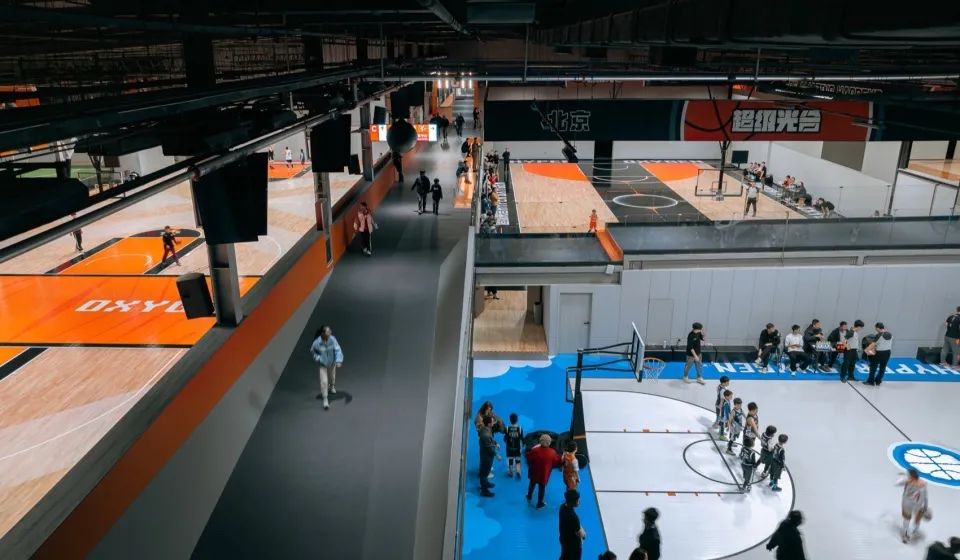
Read More《还没开店的运动场馆,靠社交概念融资1.4亿》
Positive Reviews: Precise Capture of the “Sports + Social” Trend and Redefinition of the Emotional Value of Offline Spaces
The phenomenon that Ballers secured $20 million in financing before opening its first store is essentially a precise response to the upgrading of contemporary sports consumption demands. The innovative value and market foresight of its business model are worthy of recognition.
Firstly, Ballers has identified the pain points in the “light – sports + strong – social” consumption model, transforming sports from a single “functional need” into a “lifestyle carrier”. As mentioned in the news, contemporary people are no longer satisfied with just “breaking a sweat” when exercising; instead, they pursue emotional value and social experiences. The core logic of Ballers is to use sports with low thresholds and strong social attributes, such as pickleball and cage tennis, as the “starting point”, and combine them with complex spaces like gyms, restaurants, and art exhibitions to create an “all – inclusive” social scenario. Users don’t need to move between multiple places for socializing. They can complete sports, dining, communication, and even cultural experiences in the same space. This “one – stop” design precisely addresses the pain points of fragmented socializing and high time costs for modern people. In essence, it upgrades sports venues from “tool – type spaces” to “emotional connection hubs”.
Secondly, Ballers’ selection and cultivation of emerging sports demonstrate its keen insight into market trends. The rise of pickleball and cage tennis is a key support for its business model. Data shows that the number of pickleball participants in the United States has increased by 311% in three years, and the global market size is expected to grow from $2.2 billion to $9.1 billion within a decade. The number of cage tennis courts in the United States has soared from 20 in 2019 to 450. These sports share the characteristics of low thresholds, easy accessibility, and short time requirements, which are naturally suitable for social scenarios. People can participate without professional training, reducing their “social pressure”. Meanwhile, the fun and interactivity of these sports (such as the short – round confrontation in pickleball and the small – court cooperation in cage tennis) can quickly close the distance between people and act as a “catalyst” for socializing. By combining these “socially – friendly sports” with complex spaces, Ballers provides users with a “social excuse” to meet their deep – seated emotional needs in the name of sports.
Thirdly, the endorsement from capital and sports celebrities validates the market potential of the model. The lead investor, Sharp Alpha, mentioned that “timing is crucial” because Ballers emerged at the peak of the “shift of user behavior towards social experiences”. The participation of more than 30 active and retired NBA and NFL players not only brings traffic and trust endorsement to the brand but also strengthens the cultural attribute of “sports + social”. The involvement of sports stars has upgraded Ballers from a “commercial space” to a “cultural symbol of a specific circle”, attracting the recognition of the target users (urban groups with medium to high incomes who pursue a quality lifestyle). Additionally, Ballers verified the demand through a pop – up test last year. The attempt of temporarily setting up courts, organizing events, and parties proved that users are willing to pay for this “lifestyle”, providing empirical support for the financing.
Finally, Ballers’ ambition in “cultural construction” provides a new paradigm for the industry. The founder, Porter, emphasized that “we are not just building courts; we are constructing a culture”. This positioning breaks away from the single logic of traditional venues that “sell court space and courses” and shifts towards the long – term value of a “lifestyle brand”. By binding high – sticky users through a membership system (monthly fees ranging from $99 to $499), expanding the customer base through non – member single – time consumption, and increasing the customer unit price through differentiated services such as art exhibitions and rehabilitation areas, Ballers’ revenue structure is more resilient. The plan to expand to 50 stores in the future is essentially a replication of a “social culture”. When Ballers spaces in multiple cities form a network, users’ social radii will be expanded, and the brand’s cultural identity will be further deepened.
Negative Reviews: Unverified Operational Risks, Cost Pressures, and Localization Challenges
Although Ballers’ model is full of imaginative potential, its business feasibility still needs time to be verified, and it may face multiple challenges during the expansion and localization process.
Firstly, under the halo of “financing without a single store”, the core operational capabilities have not been tested by the market. Ballers’ business model is based on the operation of a complex space integrating “sports + social”, but the key to profitability in offline spaces lies in “space – time efficiency” and “user repurchase”. As mentioned in the news, similar complex spaces in China (such as Super Photosynthesis in Beijing) have faced difficulties in making profits due to high costs and the lack of well – developed user consumption habits. The first store of Ballers (a 5,100 – square – meter renovated space in Philadelphia) has to bear high costs for venue renovation, equipment maintenance, and multi – format operations (catering, rehabilitation, art). If users only come for playing sports and the consumption conversion of other formats (such as restaurants and exhibitions) is insufficient, it may lead to a situation of “high investment, low return”. In addition, the core of the membership system is user retention. The pricing of monthly fees from $99 to $499 targets the medium – to – high – income group. However, if the quality of social activities and the venue experience do not meet expectations, the user renewal rate may be lower than expected, which will affect the cash flow.
Secondly, whether the “boom” of emerging sports can last is a potential risk. Although the explosive growth of pickleball and cage tennis has provided an opportunity for Ballers, it is questionable whether the “social attribute” of these sports is sufficient to support long – term user stickiness. As mentioned in the news, many pickleball users in China lose interest after just trying it out, and there are only about two or three hundred core users. Is there a similar “pseudo – demand” in the US market? If the popularity of these sports fades due to the loss of novelty or the emergence of substitutes (such as other low – threshold sports), Ballers’ “sports starting point” may become ineffective, resulting in a decline in the attractiveness of the space. Moreover, the singularity of sports items may also limit the customer base. If users are only interested in pickleball or cage tennis, the utilization rate of other sports facilities (such as golf simulators and squash courts) may be insufficient, causing a waste of resources.
Thirdly, the management difficulty of rapid expansion cannot be underestimated. Ballers plans to open 50 stores in 7 – 10 years, covering core cities in the United States. This expansion speed poses extremely high requirements for operational standardization. From the “cultural construction” of the first store to the “cultural implementation” of replicated stores, three major problems need to be solved: the differences in user demands in different cities (for example, the social preferences in New York and Miami may vary), the standardization of multi – format operations (such as how to unify the brand tone of restaurant dishes and art exhibition themes), and talent reserve (a large number of compound management talents who understand sports, socializing, and space operation are needed). If the experience of individual stores varies greatly due to insufficient standardization during the expansion process, the brand’s reputation may be damaged, which will further affect subsequent financing and profitability.
Finally, the feasibility of replicating the Ballers model in the Chinese market is questionable. As mentioned in the news, although there is a demand for sports – socializing in China, it mainly relies on sports with existing community foundations, such as badminton, cycling, and hiking, rather than emerging sports like pickleball. Chinese users have not yet developed the consumption habit of using “complex spaces”. They prefer to complete “sports + socializing” in different scenarios (for example, having a meal at another restaurant after playing ball) rather than meeting all their needs in the same space. In addition, the venue costs (especially for renovated spaces in core cities) and labor costs in China are higher. If the user consumption frequency and customer unit price cannot cover the costs, the complex space is likely to fall into a cycle of “investment – loss”. Chinese industry insiders also point out that the profitability of venues depends on “prime locations, refined operations, and long – term community building”, rather than a single concept. Ballers’ “lifestyle” concept may be difficult to implement in China due to the weak user base and high operational difficulty.
Advice for Entrepreneurs: Extract the Key Logic of Localized Innovation from the Ballers Model
The success and controversies of Ballers provide multi – dimensional insights for entrepreneurs. Combining the characteristics of the domestic market, the following directions are recommended:
-
Demand Identification: Dig out “Real Pain Points” from “Pseudo – Demands”
The core of Ballers is to identify the demand for emotional value in “sports + social”, but entrepreneurs need to be vigilant against the trap of “pseudo – demands”. Chinese users may have a higher enthusiasm for trying out emerging sports (such as pickleball) than for long – term participation. Therefore, entrepreneurs should first choose sports with existing community foundations (such as badminton, frisbee, cycling) as the “social starting point” and design scenarios based on users’ high – frequency demands (such as daily exercise and weekend gatherings). For example, for badminton communities, a complex space integrating “badminton court + light meals + sports equipment retail” can be created to reduce customer acquisition costs by leveraging the high stickiness of existing communities. -
Model Design: Balance “Concept” and “Operation” and Focus on “Profit – able Units”
Although Ballers’ “lifestyle” concept is appealing, the core of profitability in offline spaces is still “space – time efficiency”. Entrepreneurs should avoid blindly pursuing a “large and comprehensive” complex space and can start with a “small and beautiful” single – scenario model to gradually verify the profit model. For example, start with a “sports + light – social” model (such as a badminton court + coffee bar), bind users through a membership system, and gradually add value – added services such as rehabilitation and exhibitions after users’ consumption habits are developed. At the same time, attention should be paid to the conversion of “non – sports consumption”. By improving the taste of catering and designing themed activities (such as sports – themed parties), the frequency of users’ non – sports consumption can be increased. -
Culture Construction: Shift from “Space Operation” to “User Relationship Operation”
Ballers emphasizes “cultural construction”, which is essentially to precipitate brand value through user relationships. Entrepreneurs can learn from its “social scenario” thinking and strengthen users’ sense of belonging through the linkage of online communities (such as WeChat and Xiaohongshu) and offline activities. For example, regularly organize exclusive events for members and invite sports experts to share experiences, transforming the space from a “physical place” into a “user community”. In addition, differentiated content can be designed in combination with local culture (such as city characteristics and user interests) (for example, adding water – sports socializing in southern cities and integrating ice – and – snow themes in northern cities) to enhance user recognition. -
Risk Control: Expand Cautiously and Prioritize Verifying the “Single – Store Model”
Ballers’ rapid expansion plan should be based on a proven “single – store profit model”. Before replicating the model, entrepreneurs need to verify the “revenue structure” (such as the proportion of membership fees, venue fees, and catering revenues), the “cost structure” (such as the proportion of rent, labor, and equipment maintenance costs), and the “user retention rate” (such as the average monthly repurchase frequency and renewal rate) of a single store. Domestic cases show that the failure of complex spaces is often due to “blind expansion without verifying the single – store model”. Therefore, it is recommended to adopt a strategy of “opening one store and stabilizing it”, optimize operational details based on single – store data (such as adjusting the format proportion and optimizing service processes), and then gradually replicate the model. -
Localized Innovation: Break Away from “Copying Foreign Models” and Focus on “Chinese – Specific Demands”
Ballers’ success relies on the pickleball boom and social culture in the United States, but there are significant differences in the sports preferences and social habits of Chinese users. Entrepreneurs need to break away from the thinking of “copying foreign models” and innovate in combination with local demands. For example, Chinese users are more sensitive to “cost – effectiveness”, so a low – threshold model of “basic venue + flexible social activities” can be designed (such as hourly – charged courts + free themed tea breaks). For the “Generation Z” users, elements such as Chinese fashion trends and e – sports can be incorporated (such as Chinese – fashion – themed courts and e – sports interaction areas after sports) to create a social scenario more suitable for local young people.
In conclusion, the case of Ballers is not only a microcosm of the “sports + social” trend but also reveals the possibility of the transformation of offline spaces from “functional services” to “emotional services”. For entrepreneurs, the key is not to copy a certain model but to take user needs as the core, combine the characteristics of the local market, and find the optimal solution for “sports + social” that can both meet users’ emotional value and achieve business sustainability.





